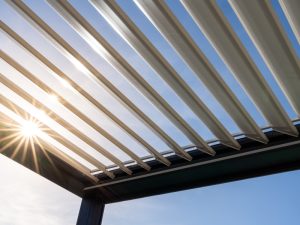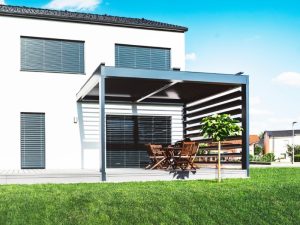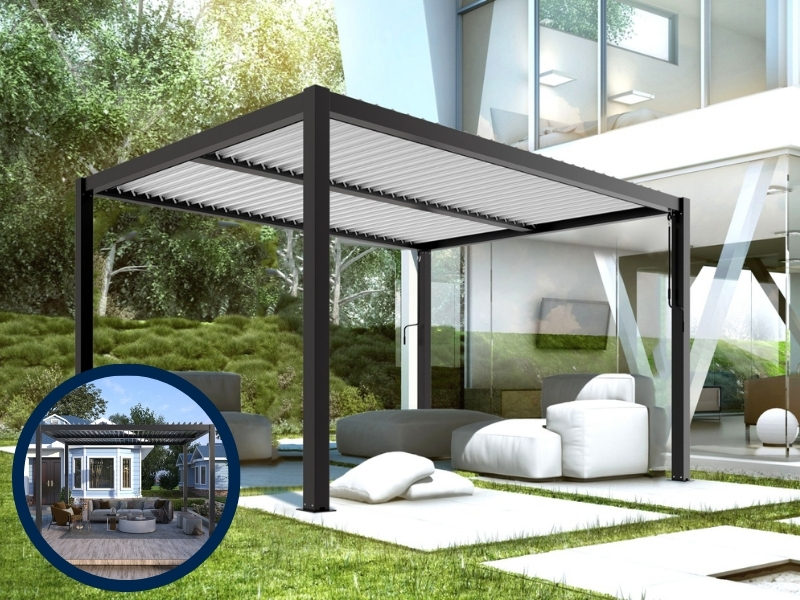A pergola can be a beautiful addition to your outdoor living space, but like any structure, it has a lifespan. Whether you’re looking to build a new pergola or want to ensure the longevity of your current one, understanding the factors that influence its lifespan is essential. A pergola’s lifespan can vary greatly depending on materials, maintenance, climate, and more. This article will dive into the key elements that impact its durability and lifespan.
Why is material choice crucial for pergola longevity?
Choosing the right material is one of the most important pergola decisions. Different materials react to the elements uniquely, impacting your structure’s appearance and longevity. Here’s a quick look at how material choice affects your pergola’s lifespan:
- Wooden pergolas: Beautiful but can deteriorate faster if not properly maintained. Regular sealing and protection from moisture can help prolong its life.
- Aluminium pergolas: Highly durable and rust-resistant, ideal for coastal areas. They’re low maintenance and weather-resistant.
- Steel pergolas: Steel pergolas are known for their strength and are built to last, though they require a protective coating to avoid rust.
- Vinyl pergolas: Low-maintenance and resistant to rot or decay. However, exposure to harsh UV rays can become brittle over time.
Choosing the right material is essential for ensuring that your pergola will withstand the test of time and maintain its aesthetic appeal.
What influences the lifespan of a pergola?
Several factors can impact the longevity of a pergola. From the environment to installation practices, each element ensures your pergola stays in good condition. Here’s a look at some of the most important factors:
Factor | Impact on Lifespan |
Environmental exposure | Harsh weather (heavy rain, extreme sun) accelerates wear and tear. |
Maintenance | Regular cleaning and protective treatments significantly improve longevity. |
Installation quality | Poor installation may lead to structural issues over time. Proper installation is crucial. |
Material quality | High-quality materials ensure a longer-lasting structure. |
Pest infestation | Unchecked pests, especially termites, can severely damage wooden pergolas. |
Various factors impact the lifespan of a pergola, from external elements like weather to internal factors like material and care.
How does climate impact the lifespan of a pergola?
The climate in your region plays a pivotal role in how long your pergola will last. Understanding Australian climate zones is important, as different climates bring unique challenges that can either shorten or lengthen the life of your pergola. Here’s what to consider:
- Coastal areas: Salt from sea air can cause rust and corrosion, especially for metal pergolas. Opt for corrosion-resistant materials like aluminium or treated steel.
- Wet, humid climates: High moisture levels can promote mildew, rot, or rust, especially in wooden pergolas. Ensure adequate drainage and regular sealing to prevent water damage.
- Hot, dry climates: Intense sunlight can cause certain materials, especially wood and vinyl, to fade or crack. Consider UV-resistant treatments to protect your pergola.

Your pergola’s material should be chosen with your local climate in mind to ensure its longevity and resilience to environmental factors.
Are DIY pergola kits built to last?
DIY pergola kits offer a fantastic way to create your dream outdoor space. Still, the quality and durability of these kits depend on several factors. When buying a DIY pergola kit, consider the following:
- Material quality: Ensure the kit uses durable materials like treated timber or aluminium.
- Assembly instructions: Proper assembly is essential for ensuring the structure’s stability. Follow the instructions carefully or consult a professional if necessary.
- Protective coatings: DIY kits with pre-treated materials for weather resistance tend to last longer than those without.
- Maintenance: Like any pergola, a DIY kit requires regular maintenance to prolong its lifespan. Check for signs of wear and tear, particularly in areas where joints meet.
DIY pergola kits from a trusted pergola provider can be built to last if made from quality materials and assembled correctly. Regular maintenance will also contribute to their long-term durability.
What common mistakes reduce pergola longevity?
Several mistakes can shorten the lifespan of your pergola. By avoiding these common pitfalls, you can ensure that your pergola stands the test of time:
- Skipping protective treatments: Failing to treat wooden pergolas with weather-resistant sealants can lead to rot and decay.
- Ignoring regular maintenance: Overlooking minor repairs, like loose screws or cracked panels, can lead to more significant structural issues down the line.
- Choosing the wrong location: Installing a pergola in an area constantly exposed to extreme weather without proper protection can accelerate wear and tear.
- Improper installation: Poor installation can weaken the structure, making it more susceptible to damage from wind or rain. This is why it is crucial to understand how to build a pergola correctly.
Avoiding these mistakes can significantly extend the lifespan of your pergola and ensure it remains a beautiful feature of your outdoor space.
How important is regular maintenance for pergolas?
Regular maintenance is key to ensuring your pergola remains in top condition. Here’s how to take care of your pergola and extend its lifespan:
- Cleaning: Regularly remove dirt, leaves, and debris from the pergola to prevent moisture buildup, which can cause decay.
- Sealing and painting: Wooden pergolas require regular sealing to protect them from moisture and UV damage. Aluminium and steel pergolas benefit from occasional protective coating touch-ups.

- Inspecting for damage: Regularly inspect the pergola for signs of wear, such as loose fasteners or cracks in the material. Early repairs prevent further damage.
- Pest control: To prevent structural damage, treat the pergola for pests like termites, especially in timber structures.
Maintaining your pergola regularly will go a long way in preserving its appearance and functionality for years to come.
What are the common signs that the lifespan of a pergola is ending?
Every pergola has a lifespan, and recognising the signs that it may be reaching its end can help you decide whether repairs or a replacement is necessary. Watch out for these indicators:
Signs | Description |
Cracks or splits | Weather damage or wear causes visible cracks in materials. |
Loose or rusty fasteners | Bolts, screws, or nails that are rusted or unstable. |
Rot or mildew | Moisture damage weakening wooden pergolas. |
Sagging or tilting | Misalignment or sagging beams indicating structural issues. |
Recognising these signs early can prevent further damage and help you take the necessary steps to prolong your pergola’s lifespan.
Conclusion
Understanding what factors affect a pergola’s lifespan is crucial for maintaining its beauty and functionality. Material choice, climate, proper installation, and regular maintenance ensure your pergola lasts for years. By taking the necessary precautions and avoiding common mistakes, you can enjoy your pergola for a long time.
If you’re considering enhancing your outdoor area with a high-quality, durable pergola, Connect with Unique Pergolas to discuss your project


